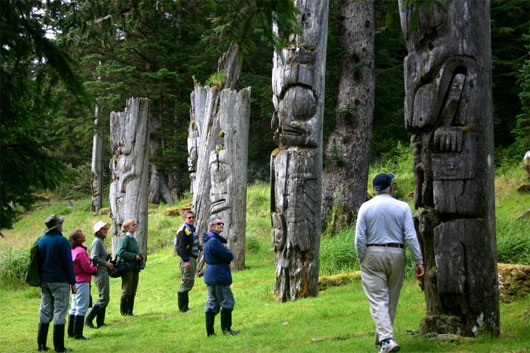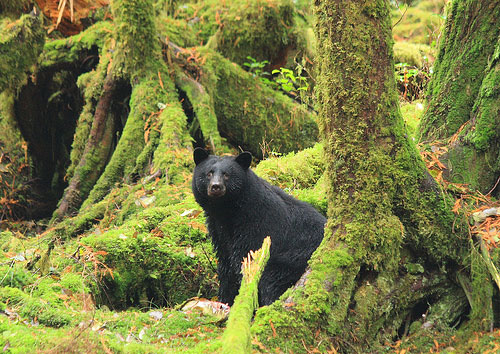Many giant trees in Gwaii Haanas National Park
Gwaii Haanas National Park consists of islands, small islands, bays, small creeks, tidal lakes and beaches.
The temperature of the Pacific rainforest extends from the sea to the slopes of the San Christoval Mountains. Flowers, herbs, grass and lobster grass on the mountain grow stronger.
The forest has huge trees
At lower altitudes, moderate rain and temperature facilitate dense, moss-covered forests with high red western cedar trees, samurai and Sitka spruce.
Some trees in ancient forests have lived for over 1,000 years and have elevations of up to 95 meters.
Various types of low-altitude trees are made up of shrubs including heath, blueberries, ferns, ferns and many more.

You can see with your own eyes the huge trees in Haida Gwaii.(Photo: Go Haida Gwaii).
Ever isolated and thawed early
Through geological history, the beaches of Haida Gwaii have changed. Many islands are currently above the previous sea level ever below and vice versa. In the last ice age, while most of North America was covered in ice, some small portions of Haida Gwaii thawed. Some living creatures have developed many unique characteristics.
Different animal system
Islands are a special habitat for flora and fauna. The distinctive Haida Gwaii fauna has evolved over thousands of years. Six of the ten mammal species on the islands are subspecies that cannot be found elsewhere on Earth. These include dark shrews, Ecmin weasels and Marten weasels.

Black bear Haida Gwaii
Haida Gwaii Black Bear is also the only animal and today only on the islands. With a rich diet including salmon and hard-shelled creatures for too long, black bears have larger developed teeth than black bears that live on land.
Many invasive animals
Many common continental animals such as cougars, wolves and bears cannot be found on all islands. However, many other popular species include deer, long black-tailed Sitka deer, pandas, squirrels, beavers and three species of rats.
- The campaign turned Singapore into a giant park
- Giant lizards block the battle lines with snakes
- China discovered 56m long fossil tree breaking world record?
- Komodo National Park - Indonesia
- Strange tree trunks in California
- America will recreate giant giant trees
- Yor-Don National Park calls for help
- Te Wahipounamu, southwestern New Zealand national parks
- British diver caught giant lobster nearly 70 years old
- Þingvellir National Park (Thingvellir)
- Rhino in Cat Tien National Park is under threat
- Lizard catches insects on trees
 Why do potatoes have eyes?
Why do potatoes have eyes? 'Tragedy' the world's largest carnivorous life: Death becomes ... public toilet
'Tragedy' the world's largest carnivorous life: Death becomes ... public toilet Tomatoes were once considered 'poisonous' for 200 years
Tomatoes were once considered 'poisonous' for 200 years Detecting microscopic parasites on human face
Detecting microscopic parasites on human face